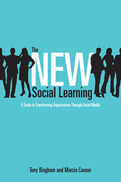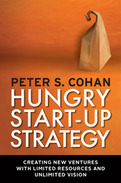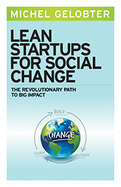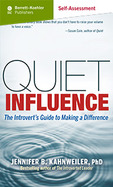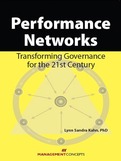-
The first book to help organizations understand and harness the extraordinary workplace learning potential of social media
-
Cowritten by the CEO of the world's largest workplace learning organization and a consultant and writer with extensive experience on the forefront of workplace learning technology
-
Features case studies showing how organizations around the world have transformed their businesses through social media
Most business books on social media have focused on using it as a marketing tool. Many employers see it as simply a workplace distraction. But social media has the potential to revolutionize workplace learning. People have always learned best from one another -- social media enables this to happen unrestricted by physical location and in extraordinarily creative ways. The New Social Learning is the most authoritative guide available to leveraging these powerful new technologies.
Tony Bingham and Marcia Conner explain why social media is the ideal solution to some of the most pressing educational challenges organizations face today, such as a widely dispersed workforce and striking differences in learning styles, particularly across generations. They definitively answer common objections to using social media as a training tool and show how to win over even the most resistant employees. Then, using examples from a wide range of organizations -- including Deloitte, IBM, TELUS, and others -- Bingham and Conner help readers sort through the dizzying array of technological options available and decide when and how to use each one to achieve key strategic goals.
Social media technologies -- everything from 140-character "microsharing" messages to media-rich online communities to complete virtual environments and more -- enable people to connect, collaborate, and innovate on levels never before dreamed of. They make learning dramatically more dynamic, stimulating, enjoyable, and effective. This greatly anticipated book helps organizations create a contemporary learning strategy that is as timely as it is transformative.
2013
Entrepreneurs are hungry. But it's not just because they're living on ramen and adrenaline while they pour their all into their business. Peter Cohan has found it's something deeper: a hunger to create the kind of world they want to work in.
Entrepreneurs are hungry. But it's not just because they're living on ramen and adrenaline. Peter Cohan has found they're driven by a hunger to create a working world in which they want to live—something they have to do without money or staff. No business strategy guide has addressed this unique combination of aspirations and challenges—until now.Cohan focuses on six key start-up choices—setting goals, picking markets, raising capital, building teams, gaining market share, and adapting to change—explaining how and why start-ups must make very different choices than established companies. For each area, he provides a decision-making approach and lively case studies of what actual entrepreneurs have done to cook up a thriving business from scratch.
- The first research-based book on business strategy for start-ups
- Based on Cohan's venture investment experience and on his interviews with over 150 start-up CEOs
- Offers specific approaches for six critical start-up decisions
- Click here for the press release
Entrepreneurs are hungry. But it's not just because they're living on ramen and adrenaline while they pour their all into their business. Peter Cohan has found it's something deeper: a hunger to create the kind of world they want to work in. To leave a legacy, they build carefully with limited resources and maintain control of the venture's direction.
For years, students have told Cohan that the seminal business strategy guide, Michael Porter's Competitive Strategy, was too big-company focused. So Cohan -- who once worked with Porterhas written the first business strategy book to address start-ups' very different challenges.
Cohan focuses on six key start-up choicessetting goals, picking markets, raising capital, building teams, gaining market share, and adapting to changeexplaining the unique rules start-ups must follow. For example, when setting goals, large corporations try to maximize their long-term return on equity, but resource-poor start-ups have to plan by setting a series of short-term goalsand how they do this will mean the difference between blazing a trail or flaming out. When entering a new market, well-fed companies can invest substantial time and capital before ever launching a product, but hungry start-ups must get an adequate prototype in front of customers fast, get feedback, and quickly develop a viable business model or they'll starve to death.
For each of these six areas, Cohan provides a decision-making approach and lively case studies of what actual entrepreneurs have done. He extracts hard-hitting lessons not only for start-ups but also for investors and even established companies. Hungry Start-up Strategy offers a full menu of vital information for anyone seeking to cook up a thriving business from scratch.
Traditionally, whether creating a new business or a new program, entrepreneurs in all sectors develop a plan, find money to fund it, and pursue it to its conclusion. The problem is, over time conditions can change drastically—but you're locked into your plan. The lean startup is all about agility and flexibility. Its mantra is “build, measure, learn”: create small experimental initiatives, quickly get real-world feedback on them, and use that data to expand what works and discard what doesn't.
Using dozens of social sector examples, Gelobter walks you through the process. The standard approach wastes time and money. The lean startup will help your organization vastly increase the good it does.
Product: Online streamed self-assessment application (not downloaded), limited one-year subscription (5 tests or 12 months, whichever comes first), password controlled, view past results to track progress.
Duration: 18 questions covering six related topics rated 1 to 5 with 1 as 'Never' and 5 as 'Almost Always.' The self-assessment takes 5-10 minutes to answer.
Results: The bar graph and score chart shows overall results and specific results in the six related topics. The results include interpretation from author, next steps, follow-up questions to consider based on scores, author's closing statement, and print option.
BASED ON THE BOOK:
- The first book to identify six unique strengths that can make introverts powerful influencers
- Includes quizzes, exercises, and worksheets for putting quiet influencer methods into practice on a daily basis
- Features interviews with and examples of real-life quiet influencers
Introverts may feel powerless in a world where extroverts seem to rule, but there's more than one way to have some sway. As Jennifer Kahnweiler proves in this much-needed book, introverts can be highly effective influencers when, instead of trying to act like extroverts, they use their natural strengths. Kahnweiler shows how you can use those strengths to challenge the status quo, provoke new ways of thinking, effect change, and inspire others to move forward.
Kahnweiler identifies six unique strengths introverts have:
- Taking Quiet Time: The periods of solitude that introverts crave provide them with a powerful source of creativity and self-awareness.
- Preparation: Careful preparation, which makes introverts feel more comfortable, also makes them very knowledgeable and able to anticipate objections.
- Writing: Introverts' preference for writing over speaking enables them to influence others through deep, authentic, well-developed arguments.
- Engaged Listening: Introverts are great listeners-they'd rather listen than talk-which is a crucial skill for establishing rapport and mutual understanding.
- Focused Conversation: Introverts don't like small talk, but they excel at the serious, purpose-driven, one-on-one interactions vital for winning people over.
- Thoughtful Use of Social Media: Oversharing doesn't appeal to introverts online any more than it does offline, so they naturally use social media in a thoughtful, and more effective, way.
Kahnweiler includes a Quiet Influence Quotient quiz to measure how well you're using these six strengths now. Then, through questions, tools, exercises, and real-world examples, she helps you increase your mastery of these strengths. Quiet Influence is the must-have guide to deeper insight and greater impact that introverts have been waiting for and that extroverts can learn from.
PURCHASER AND USER NOTE: If you are an individual consumer newly purchasing the assessment, go directly to the shopping cart by clicking the "add to cart" icon to your left. If you are a member of an organization that has purchased a bulk order, or if you already bought the assessment in the last 12 months and are retaking it now using the original Access Key to retake the assessment please log in here. New registrants: Please enter your "Access Key" into the input field to enter the self-assessment for the first time. A note to frequent purchasers: You cannot use your current bkconnection.com password for this product; you must create and use a new password. For any questions, please contact the support desk at 800-929-2929 (8 am-9 pm Eastern U.S. time, Monday through Friday), or [email protected]. Thank you.
2009
Working across government agencies and boundaries is difficult at any level of government, but it may be the only solution for today's problems. Performance Networks: Transforming Governance for the 21st Century offers the public manager a valuable new governance tool. This resource provides a practical approach to:
• Understanding the history and workings of government-based networks
• Establishing multi-agency, cross boundary partnerships and making them work
• Improving citizen engagement


